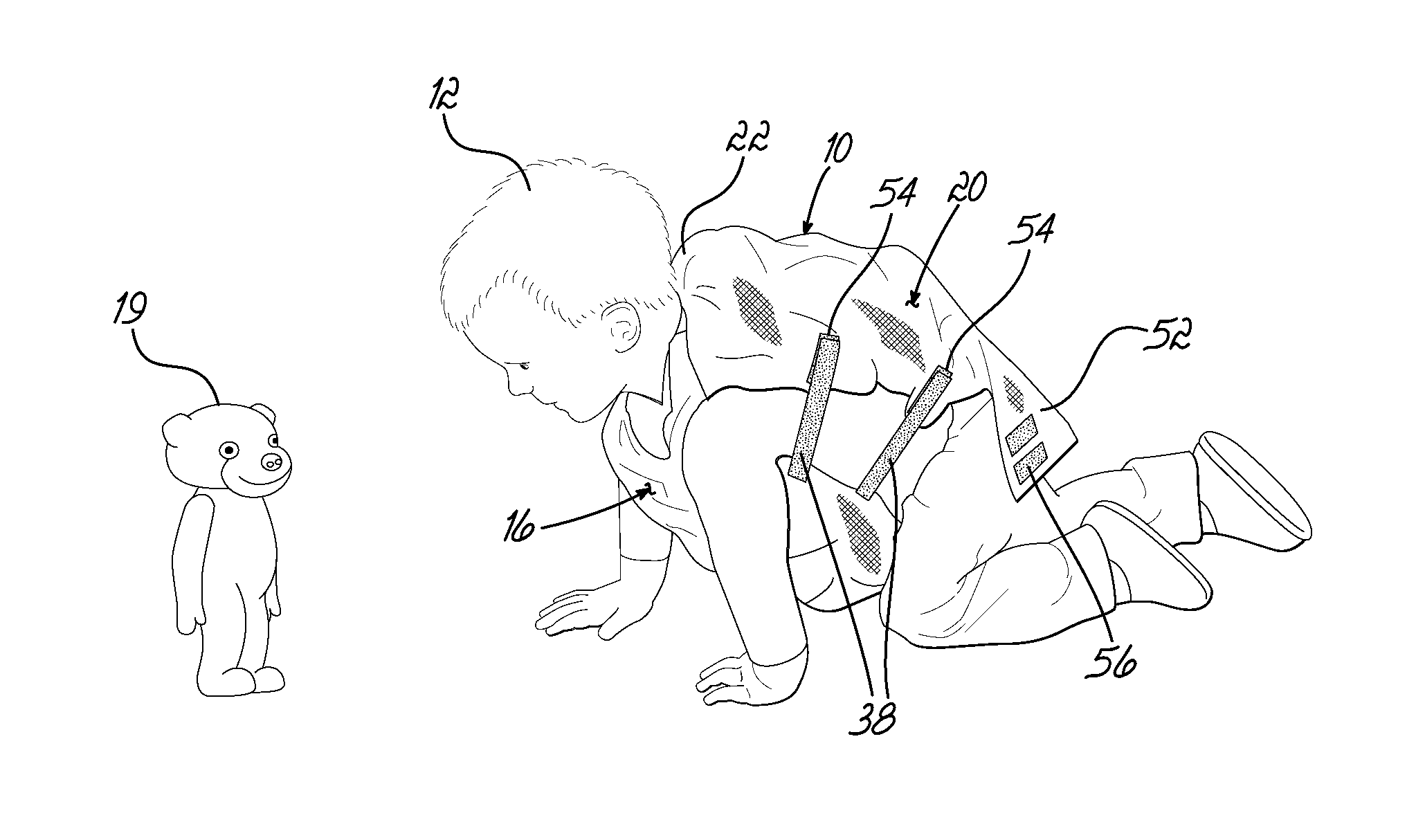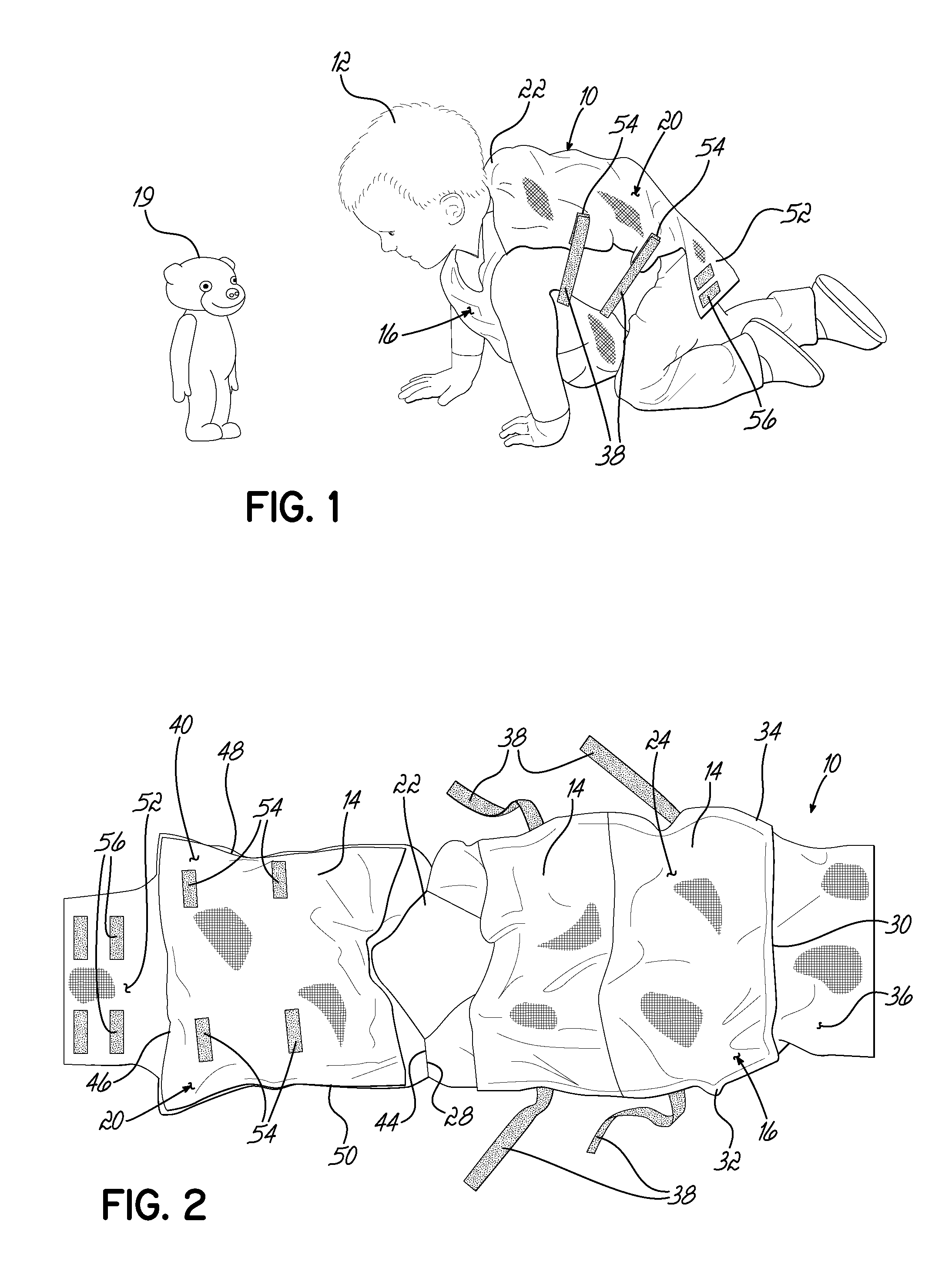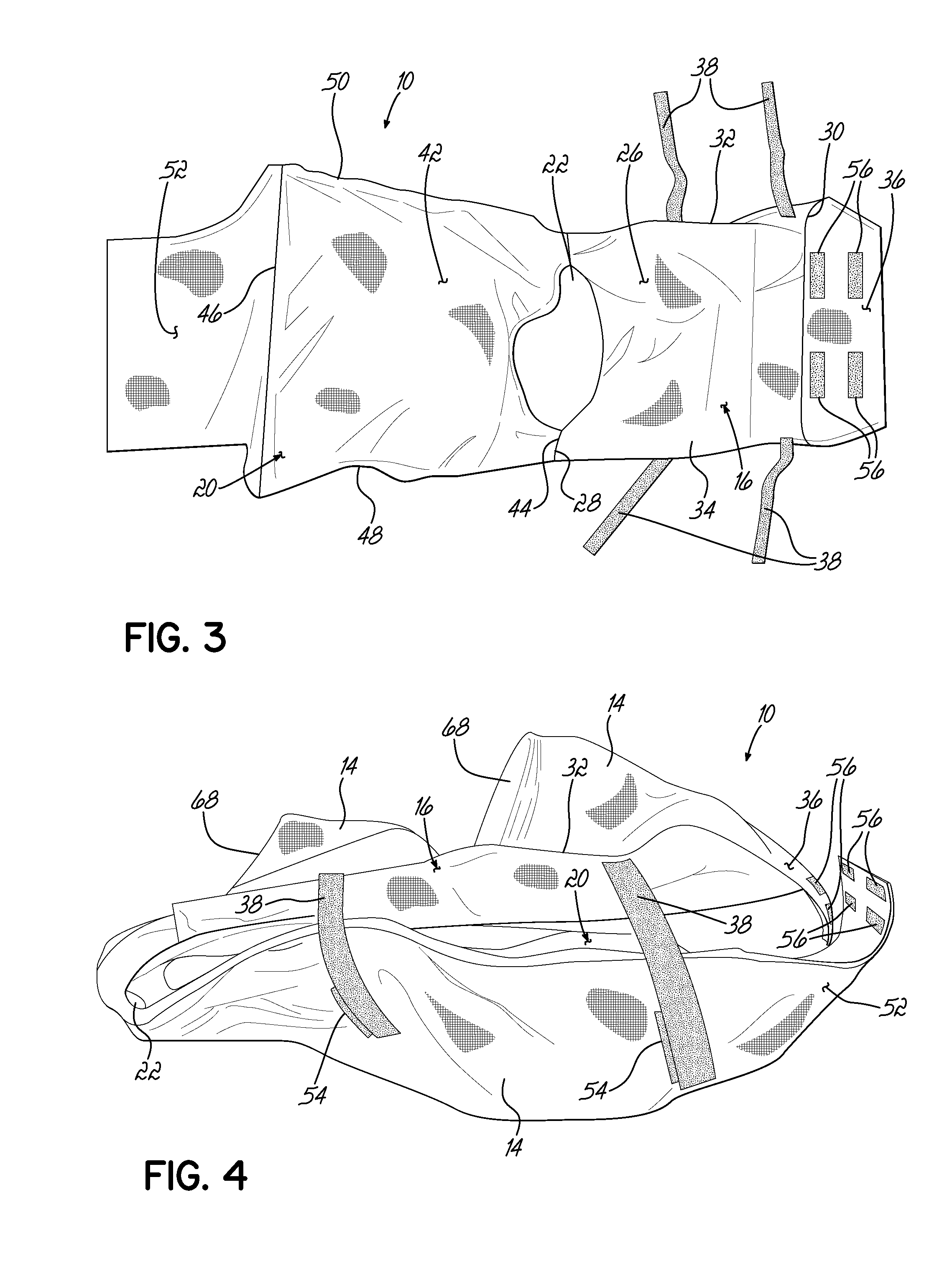Crawling encouragement garment
- Summary
- Abstract
- Description
- Claims
- Application Information
AI Technical Summary
Benefits of technology
Problems solved by technology
Method used
Image
Examples
Embodiment Construction
[0020]FIGS. 1 through 8 illustrate an exemplary embodiment of a crawling encouragement garment configured to assist a child learning how to transition from army crawling to crawling on hands and knees, also known as crawling on all fours. As shown in FIG. 1, the garment 10 is positioned over the clothing of a child 12 learning how to crawl on hands and knees. The garment 10 is adjustable at the sides and in the crotch area and is placed on the child 12 in a similar manner as a one-piece body suit or Onesie®. The garment 10 includes one or more pockets 14 along at least a front panel 16, the pockets 14 adapted to receive pressure generating members 18 such as hollow plastic members 18 in the illustrated embodiment (e.g., plastic playpen balls or elongated plastic tubes). The pressure generating members 18 define a sufficient rigidity to apply gentle pressure to the child 12 when the child 12 is laying on the floor in an army crawling position. This gentle pressure is uncomfortable fo...
PUM
 Login to View More
Login to View More Abstract
Description
Claims
Application Information
 Login to View More
Login to View More - R&D
- Intellectual Property
- Life Sciences
- Materials
- Tech Scout
- Unparalleled Data Quality
- Higher Quality Content
- 60% Fewer Hallucinations
Browse by: Latest US Patents, China's latest patents, Technical Efficacy Thesaurus, Application Domain, Technology Topic, Popular Technical Reports.
© 2025 PatSnap. All rights reserved.Legal|Privacy policy|Modern Slavery Act Transparency Statement|Sitemap|About US| Contact US: help@patsnap.com



